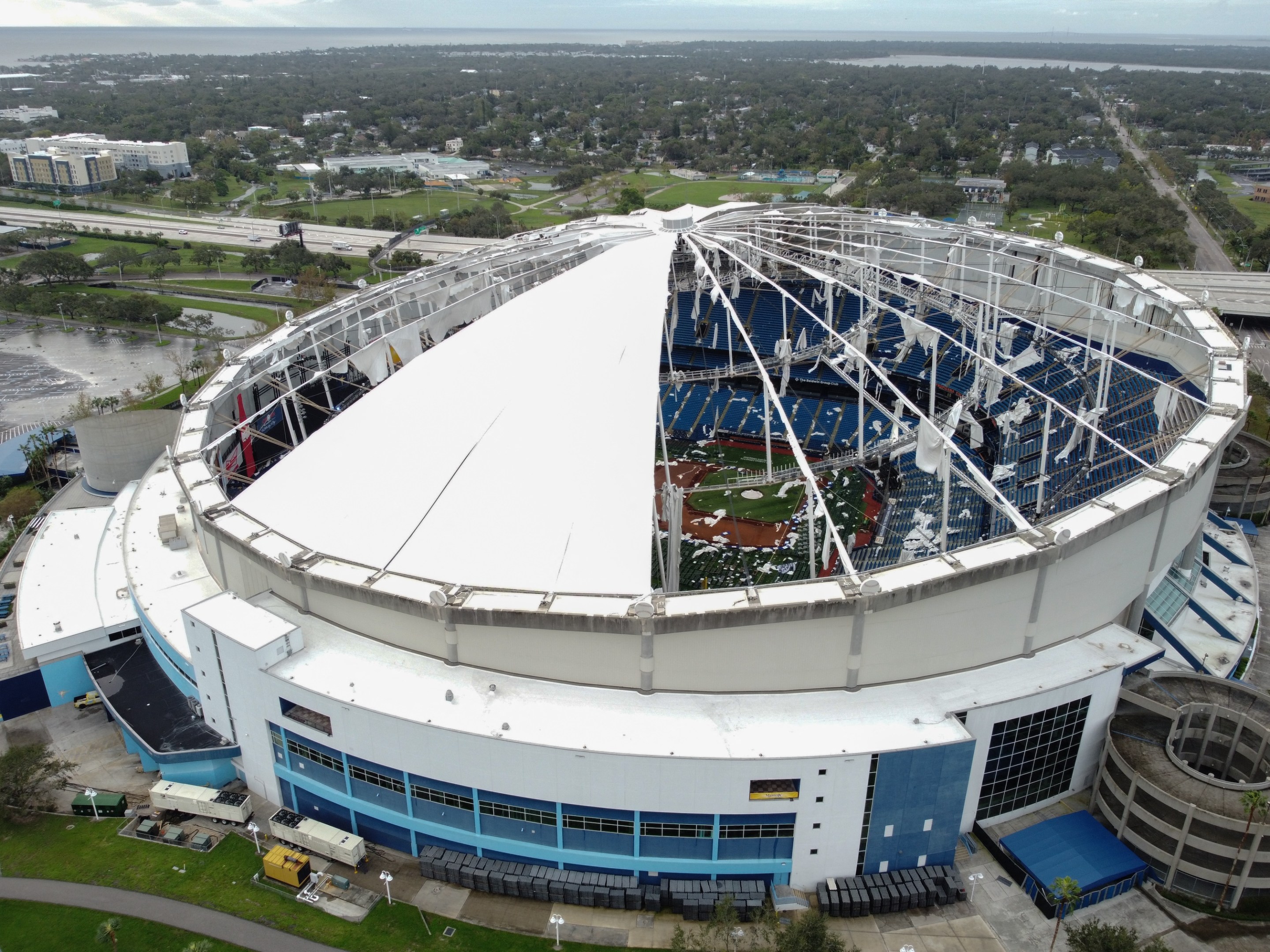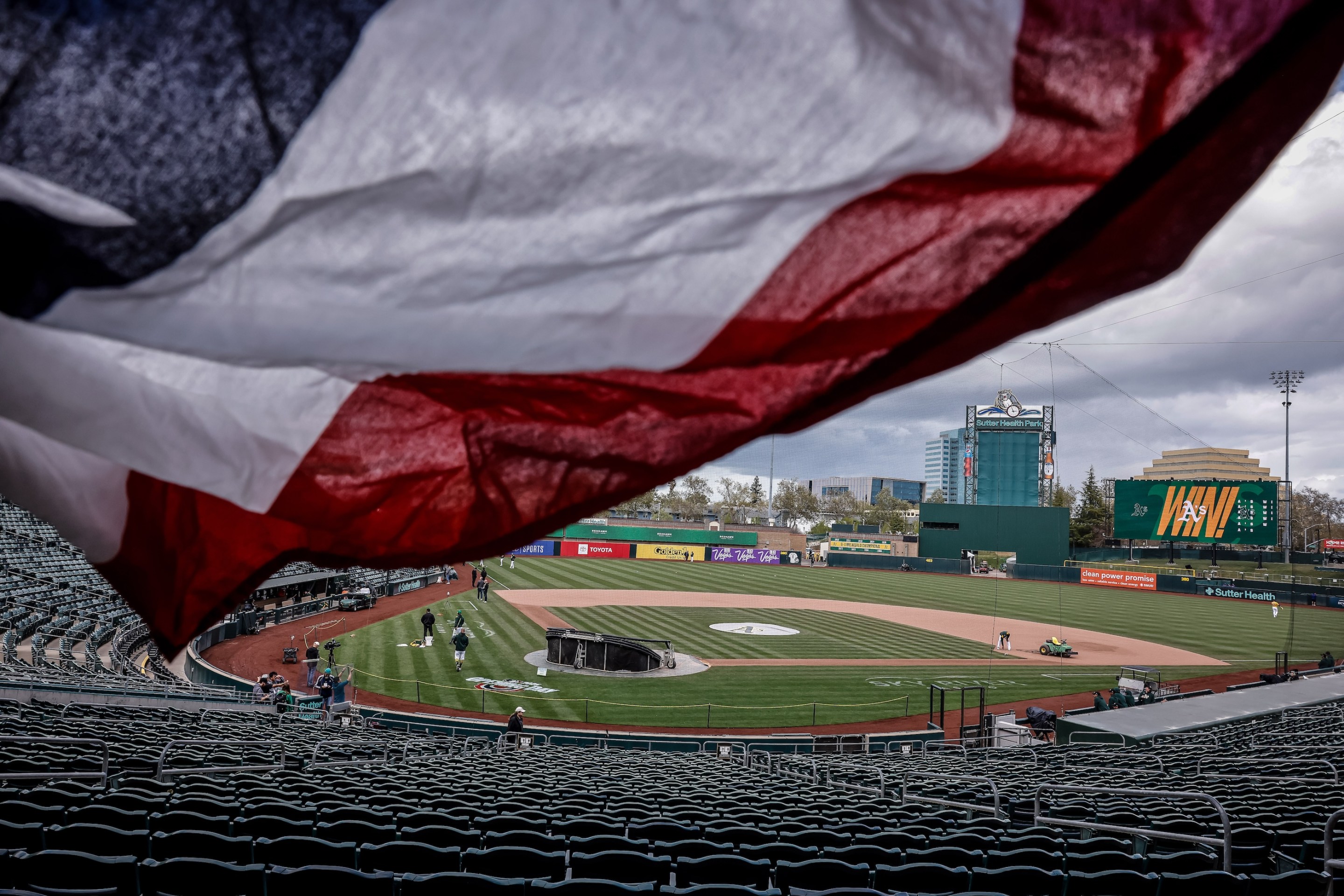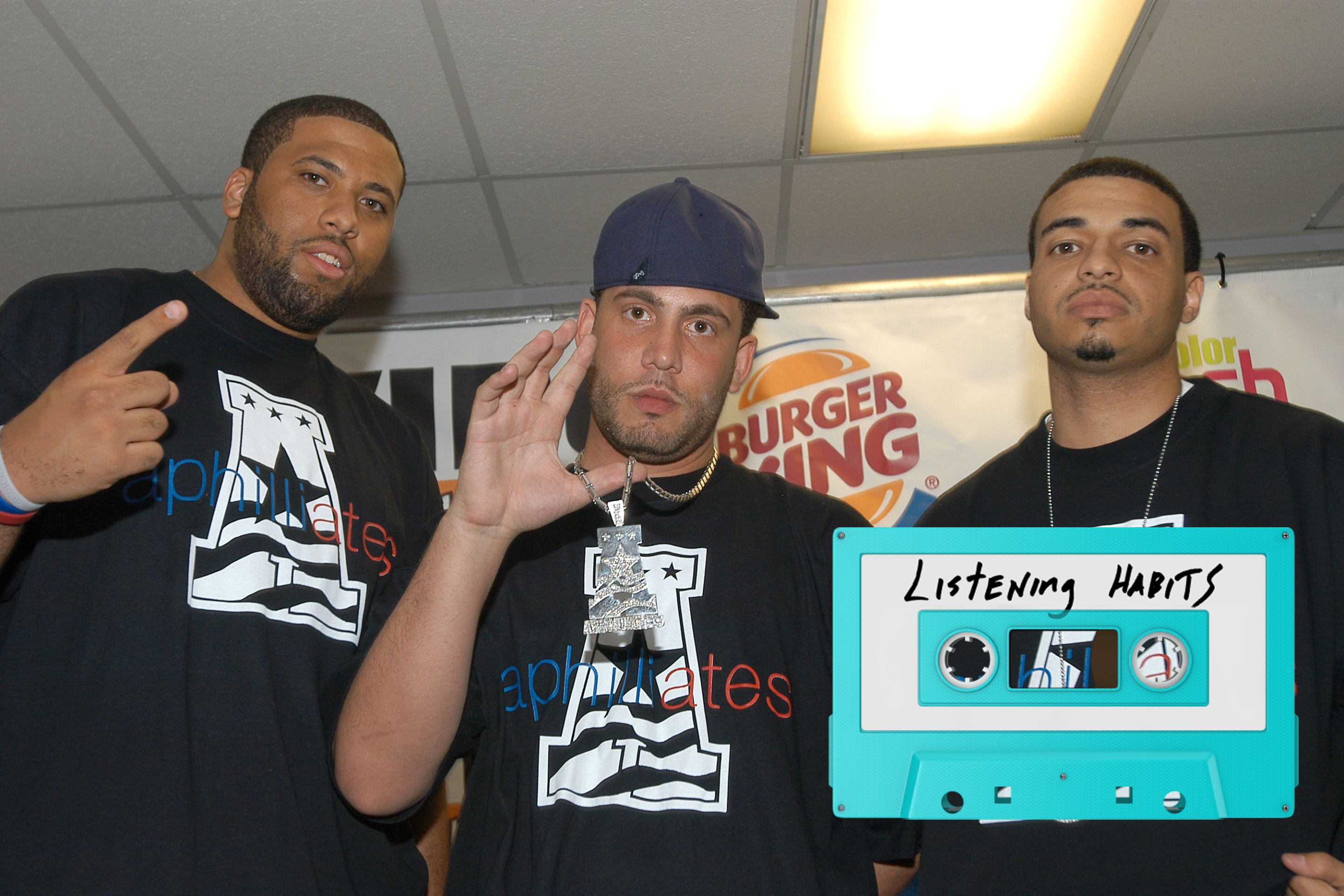Florida is digging out this morning after the arrival of Milton, the unconscionably powerful hurricane that slammed the Gulf Coast around Sarasota last night. Power is out for millions; it will take days and weeks to count the dead and tally the damage. But we already have the defining visual of the storm: Tropicana Field, home to the Rays, lost most of its roof overnight in high winds.
Here's some stunning drone footage from WXChasing:
The roof, fabric over polymer (think fancy fiberglass) panels, was built to withstand winds over 115 mph, according to the Rays' media guide. Gusts exceeded 100 mph in the region, and the roof began to fail shortly before 11 p.m. local time. The Trop was designated as a staging site for first responders and disaster relief workers—not a shelter, as has been reported—but it's unclear how much damage occurred inside the stadium, or to the roof's metal frame.
This was a not-even-once-in-a-generation storm—which, ominously, seem to happen pretty often in the era of human-caused climate change. The three-hour rainfall total in St. Petersburg of 8.5 inches makes it a 1,000-year event (which is a measure of probability more than it is time). A crane was blown off the roof of a tower under construction and severely damaged the offices of the Tampa Bay Times. Winds were so powerful they temporarily blew the water out of the Bay, in a reverse storm surge:
The Tampa Bay region appears to have gotten off relatively lightly, considering the alternative. It's the storm surge that does most of the killing in a hurricane, and because the eye of Milton struck south of the Bay, in Sarasota County, the counterclockwise winds of the cyclone blew from onshore, rather than bringing in the ocean to flood the population centers of Tampa and St. Pete.
Unfortunately that means that the areas south of Sarasota, where the storm came ashore, received the brunt of the storm surge. Communities like Fort Myers and Venice have fewer people and less media, so we haven't seen as much of the aftermath yet, but they will almost surely be where the worst of the death toll is accrued.
If you or a loved one has been affected by this storm, the Tampa Bay Times is maintaining a list of resources.






